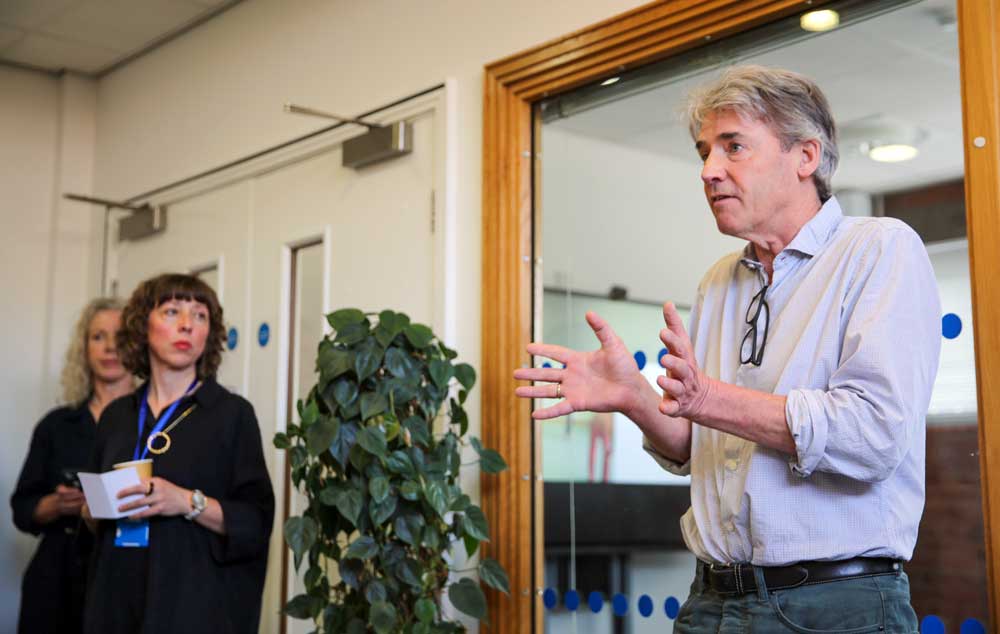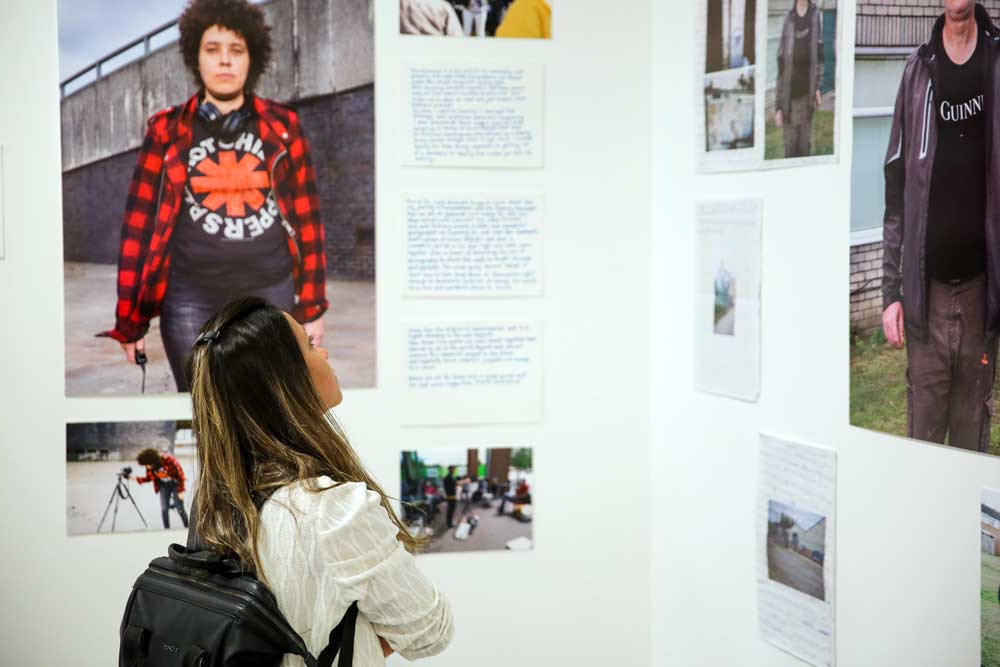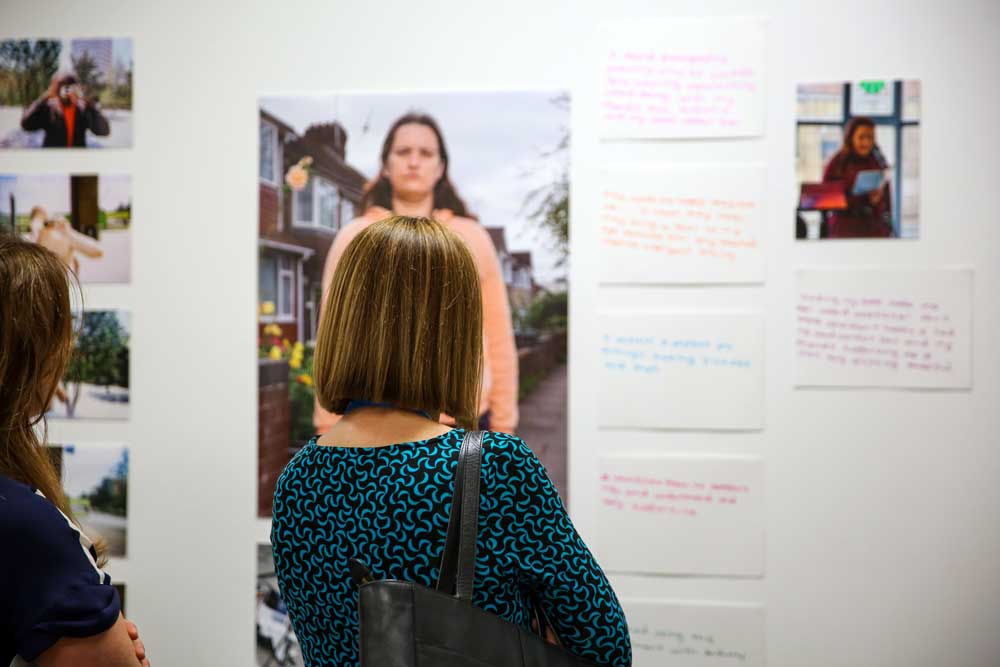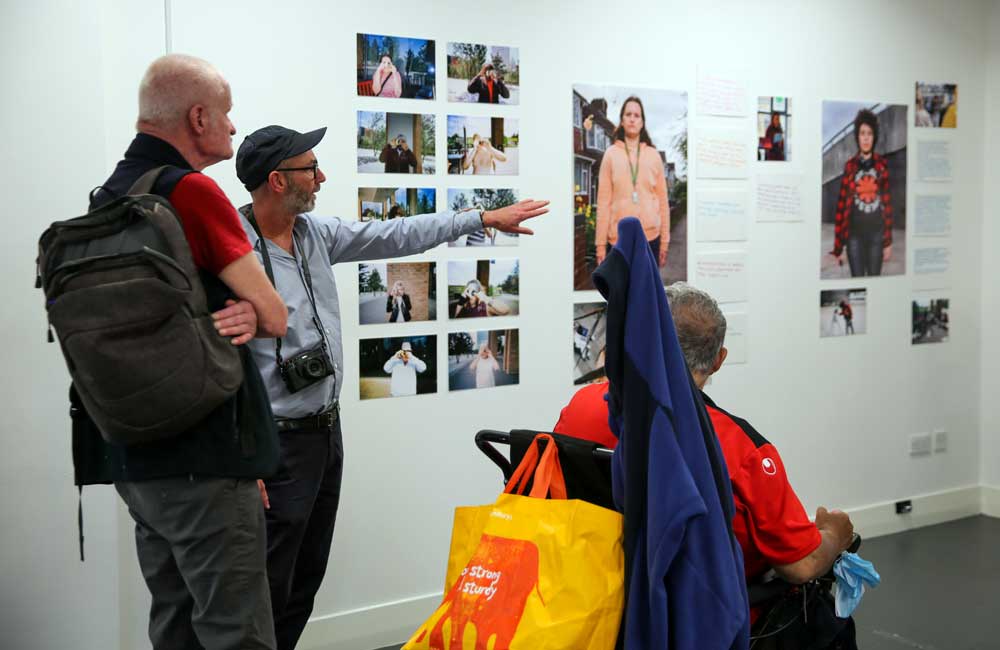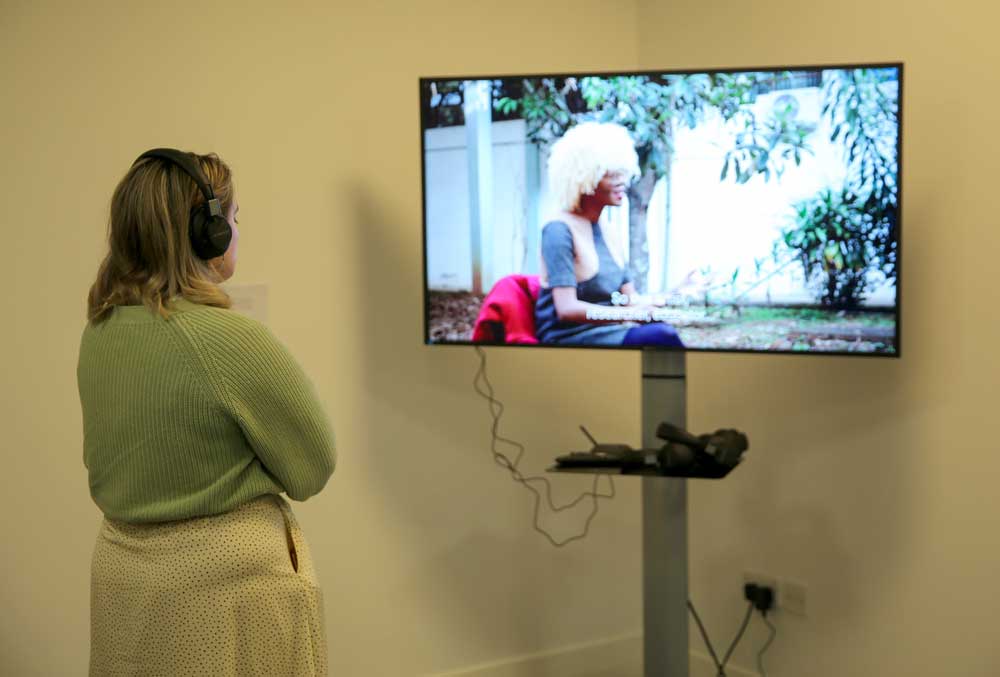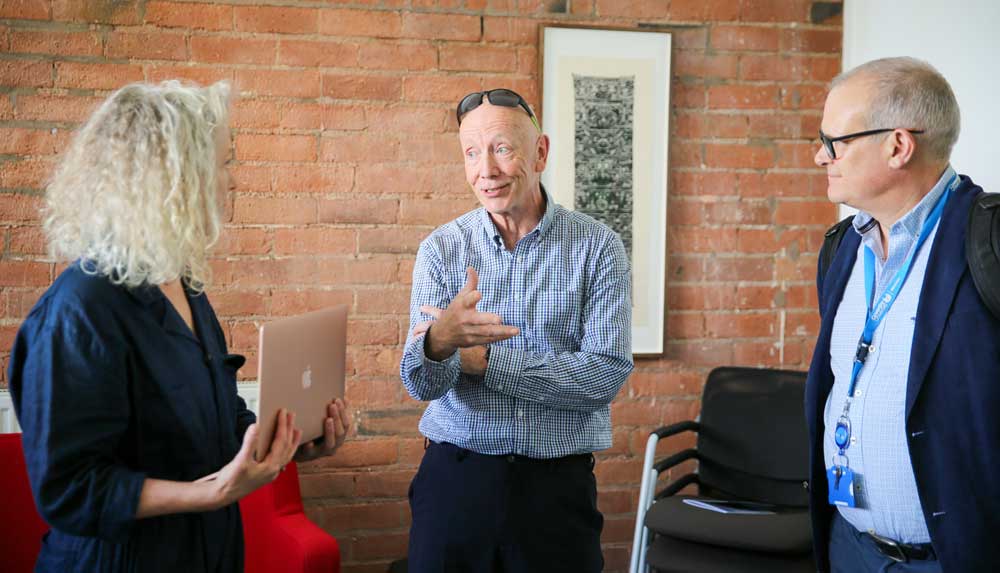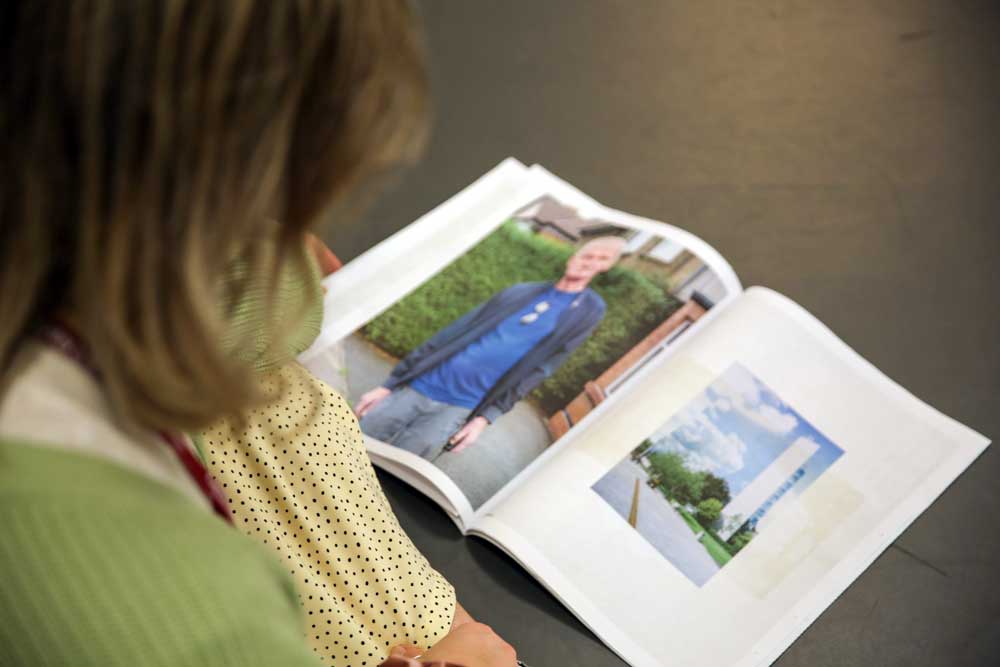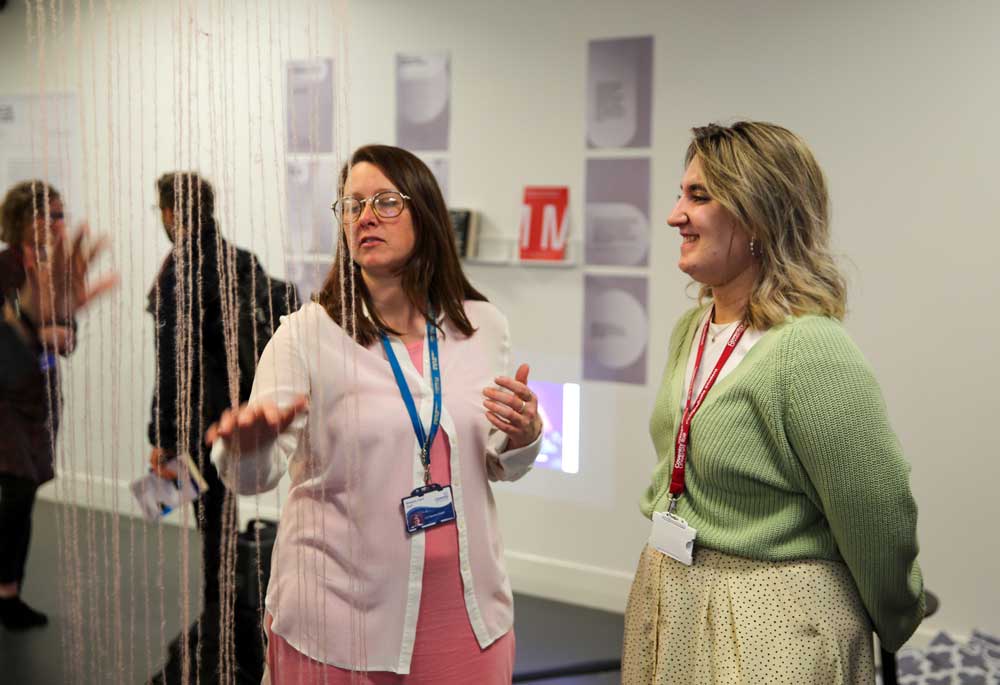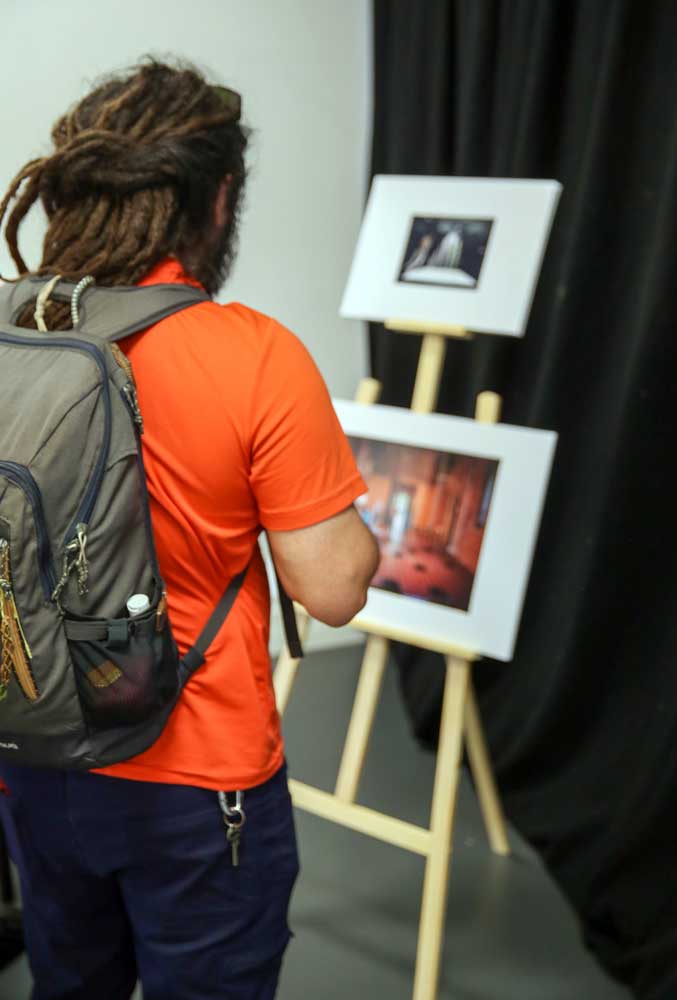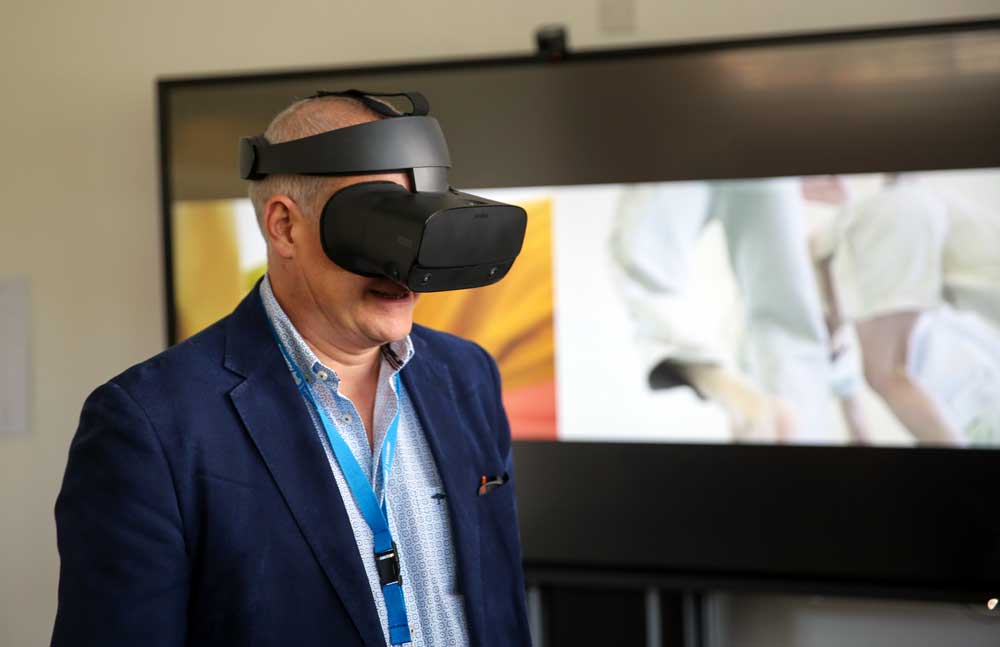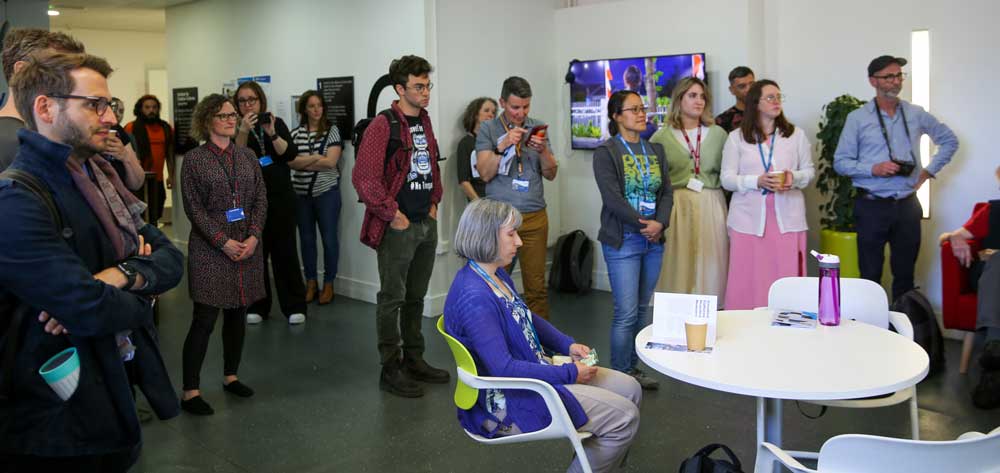Since emerging in the UK university context in the early 1990s, practice research has expanded the horizons of knowledge production, challenged institutional hierarchies, and generated innovative impact at the intersection between academic disciplines and publics. Coventry University’s Institute for Creative Cultures (ICC) is host to world-class practice researchers in the arts and humanities from the Centre for Arts, Memory and Communities (CAMC), Centre for Dance Research (C-DaRE) and Centre for Postdigital Cultures (CPC). The ICC provides a unique context for further expanding the impact of practice research in the arts and humanities by specifically exploring its transdisciplinary potential across Coventry University’s wider research environment.
In January 2022, the ICC established the Practice Research Working Group (PRWG) with the aim to bring together practice research across the institute, strengthen our transdisciplinary research approach and advocate locally, nationally and internationally for a new research paradigm. The PRWG’s work focuses on three main interest areas: training and resources for postgraduate researchers, ICC leadership in Practice Research and effective advocacy.
The Creative Cultures Practice Research exhibition was planned as a key initiative to stimulate cross-disciplinary exchange and collaboration with other research fields at Coventry University. The aim was to introduce colleagues from other research Institutes and Centres across the University to practice research in the arts by sharing a number of diverse works ranging from virtual reality, participatory methods, socially engaged art, installation, music, and curatorial practices. The exhibition featured practice research projects by José Dias (CAMC), Ruth Gibson, Petra Johnson, Lily Hayward-Smith, Karen Wood, Louisa Petts, Vipavinee Artpradid (all from C-DARE), Mel Jordan (CPC), Anthony Luvera (CAMC), Teoma Naccarato & John MacCallum (C-DARE), Carolina Rito (CAMC) and Kevin Walker (CPC).
Carolina Rito & Scott deLahunta. PRWG Chairs

AmplifyHer: voicing the experiences of women musicians in São Paulo
2021
José Dias, Rogério Costa, Kirsty Fairclough, Haftor Medbøe, Ana Fridman, Lilian Campesato, Tide Borges, Marina Mapurunga, Paulo Assis, Lígia Xavier, Matias José Ribeiro, Valeria Gospodinova
AmplifyHer: Voicing the experience of women musicians in Brazil was a pilot study designed to assess the most pressing challenges faced by female musicians in Brazil, namely those related to the lack of media exposure and poor access to job opportunities, income and financing. This was a research project funded by the Global Challenges Research Fund (GCRF), involving researchers from Manchester Metropolitan University, University of São Paulo and Edinburgh Napier University, from such diverse fields as Musicology, Ethnomusicology, Gender Studies, Film Studies, Sound Studies, and Sociology. The study ran from March to July 2021, and involved twelve female musicians from São Paulo, who represent the broader Brazilian reality. Six of the twelve participants are white and six are black. Six in twelve belong to the age group from 20 to 39 years old (New Talent – NT); three belong to the age group of 40 to 55 years (Established Artists – EA) and three belong to the age group of 55 and above (Senior Artists – SA). Data in this report were obtained from three focus groups (four participants each) and individual interviews. The methodology followed two types of triangulations, according to Denzin (1978), with the data being analysed individually and crossed by three researchers, and three types of data were obtained: focus group, direct observation, and interview. In this way, quantitative and qualitative data were obtained. All participants received training on self-promotion from music industry professionals and produced individual Electronic Press Kits (EPK) in 2022 to showcase their talent, profile, and views as women in music. In this Practice Research showcase, you can see a collection of these twelve, five-minute EPK. An industry report was also produced and distributed to the Brazilian media, and as a result, our researchers and participants have been interviewed for Brazilian and international media outlets.
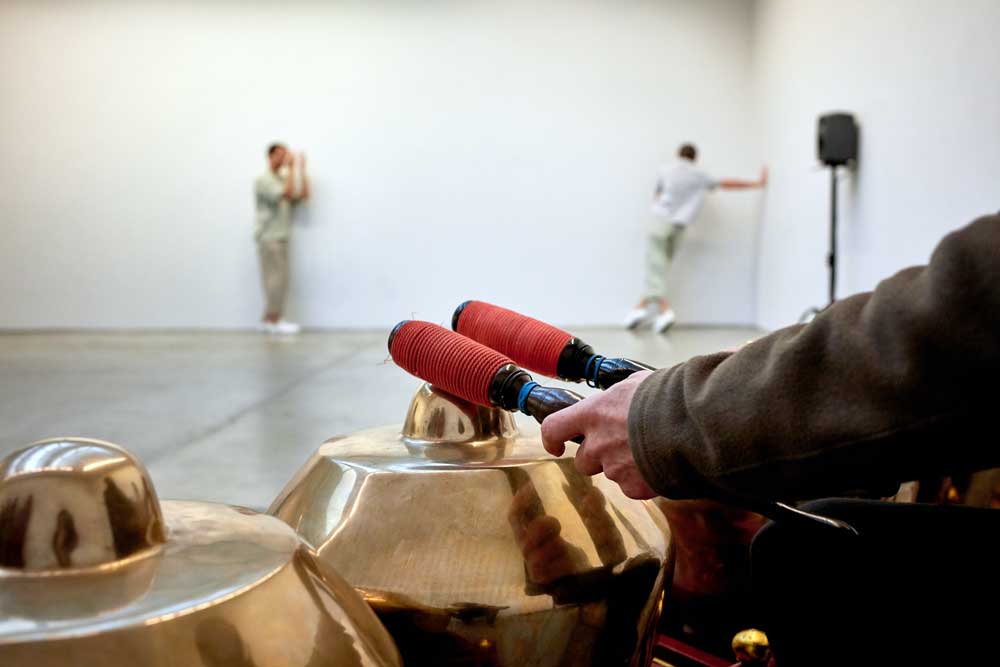
Expanded Fields
2019
Ruth Gibson, Jenny Roche, Mel Mercier, Bruno Martelli, Kévin Coquelard, Henri Montes and Ursula Robb.
Expanded Fields invites audiences into proximity with a piece of choreography, to encounter the inner worlds, sounds and sensations that dancers experience in the performance of a moment of dance. Behind this work lies a deep curiosity about how to convey the complexity of a dancing moment and to allow the feeling states and images that are experienced by dancers to be perceived by an audience. How do we create an encounter that makes us aware of our capacity to experience the world through all of our senses and to transmit these sensations between each other when we share a performance experience? It’s something ineffable, intuited and yet familiar—our ability to connect with each other on a myriad of levels at once. Film, sound installation and virtual reality spaces alongside episodic live performance illuminate the ‘expanded fields’ emanating from this dancing moment, inviting the viewer into an intimate perspective on the complexities of individual and shared experiences of dancing together.
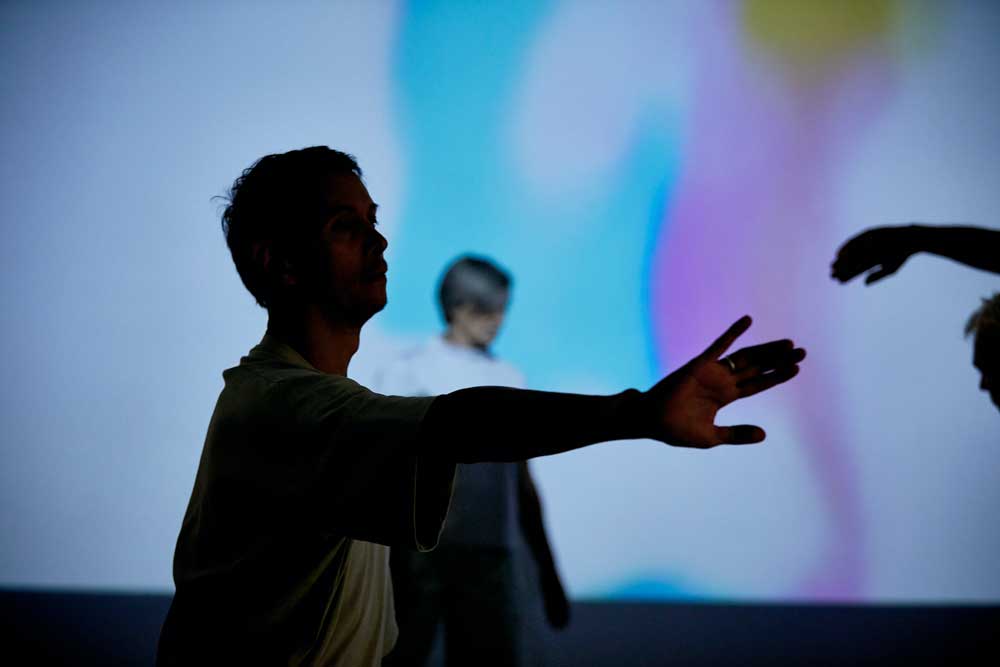
The micro-phenomenological interview was used in the studio to mine the dancers’ feelings and thoughts in the moment of making solos in the form of voice recordings, diaries and drawings. The verbs Push Jolt Rebound were choreographic starting points for trios and solos. The creative team worked with live performance, film, motion capture data and sound recordings of the dancers to produce an installation which enables the audience to enter this intimate perspective on what it means to dance a piece of choreography.
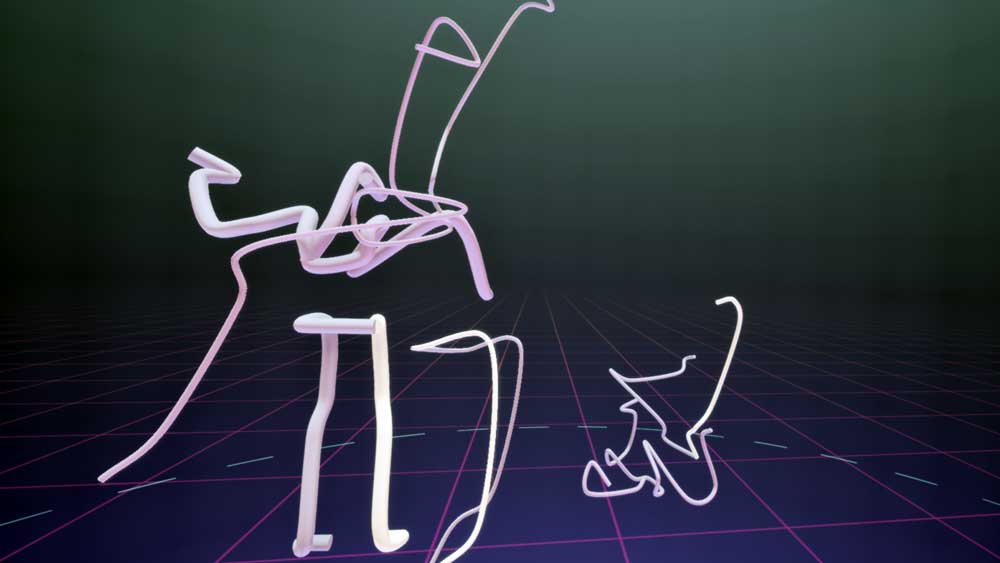
Partners:
This project is funded by the Irish Arts Council and supported by the Irish World Academy of Music and Dance, University of Limerick, Centre for Dance Research, Coventry University, Limerick City Gallery of Art, Live Collision International Festival and Lightmoves Festival of Screendance.
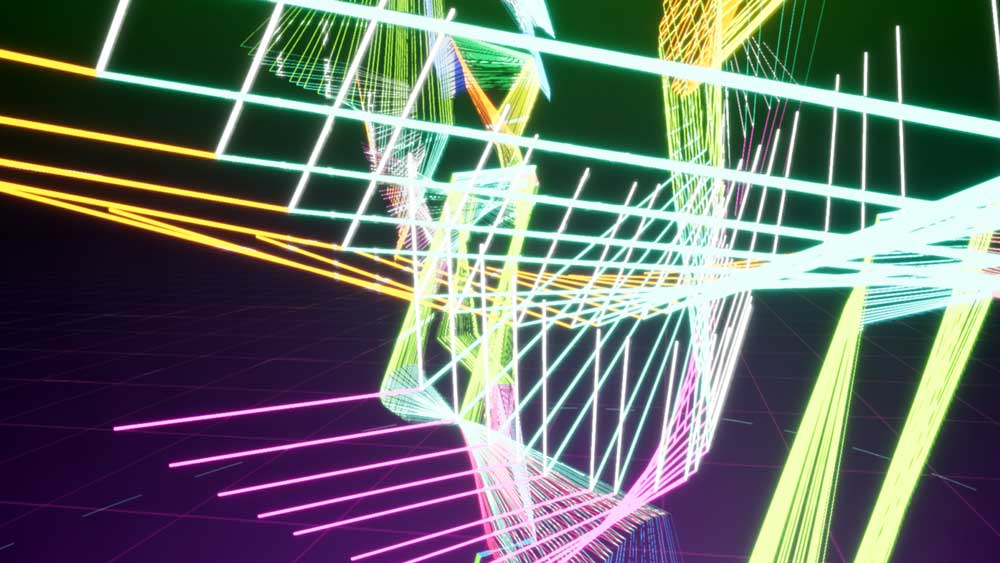
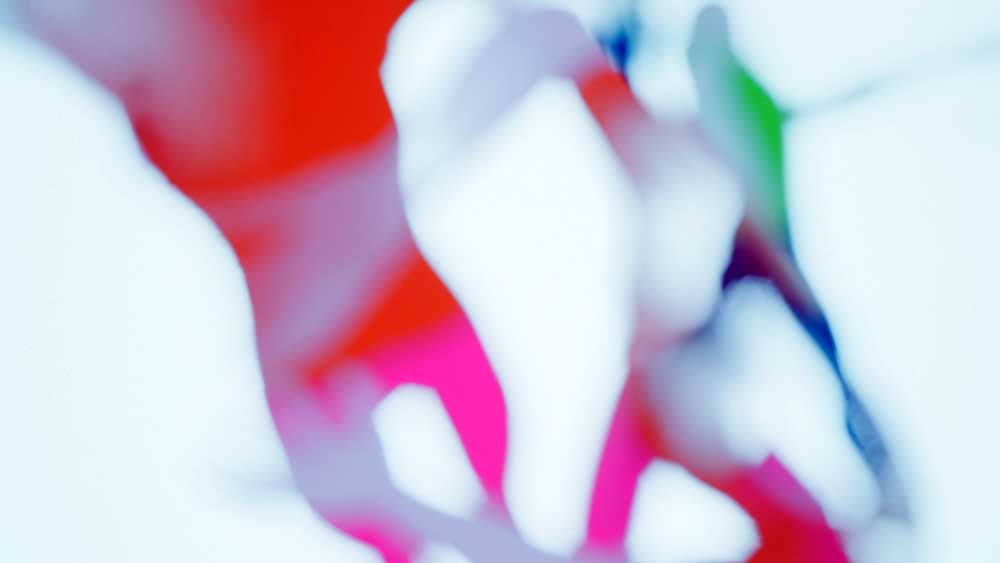
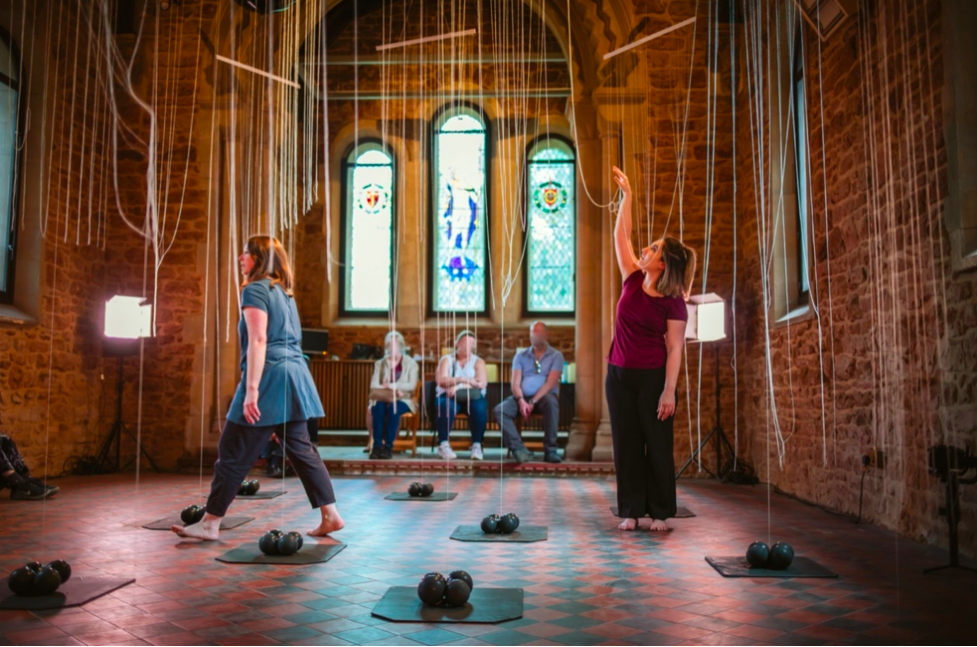
The Shape of Sound
2021-2022
Petra Johnson, Lily Hayward-Smith, Karen Wood, Louisa Petts, Vipavinee Artpradid
This project consists of installations, performances, and engagement workshops with different communities. The installation, ‘The Shape of Sound’, is an artist impression of the hair cells inside the cochlea of the inner ear. The hair cells are represented through suspended strands of delicate silk and wool threads.
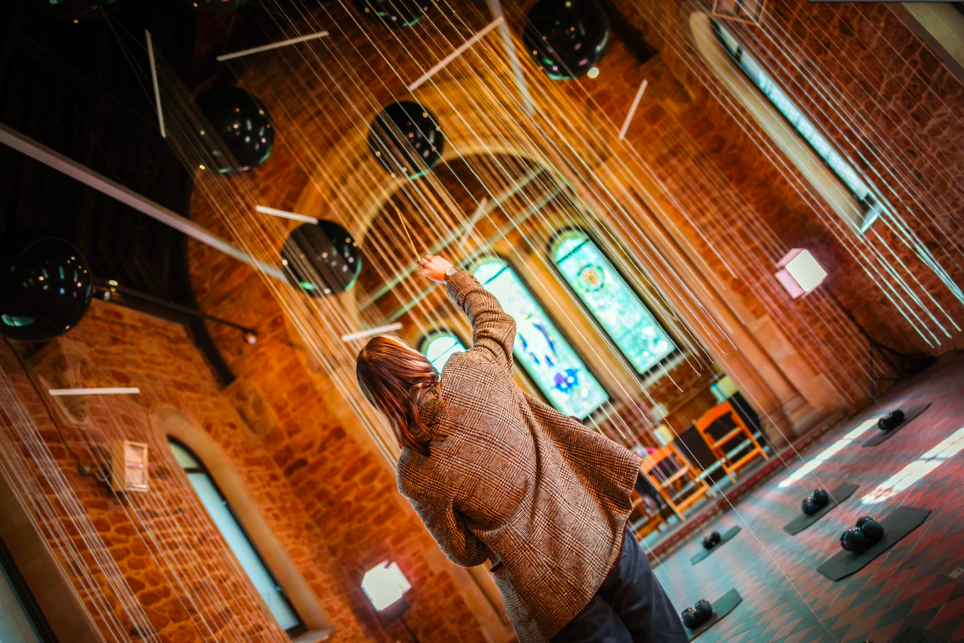
The performance is an exploration of the installation through listening, movement and touch highlighting the element of touch in the physical process of hearing a sound. The dance artists practice a process of exploratory improvisation, where research is developed through moving and deep listening with the strands, interacting with light, darkness, shadows, and silence within space. We frame our project as practice research, utilising this process as a methodology to explore research questions through movement and public engagement. Please refer to the document ‘Practice as Research in The Shape of Sound Project’ for more details.
In 2021, open rehearsals took place as part of the Being Human Festival Coventry Hub. Partnering with Historic Coventry Trust and Coventry University, the project became a site-specific installation in the Anglican Mortuary Chapel at London Road Cemetery in Coventry as part of Coventry Opens in May 2022. In Spring 2024, it will be installed at the Charterhouse in Coventry, inviting visitors to engage with a participatory movement-based exploration where they explore their bodily intelligence through sound and movement whilst simultaneously learning about the historic site.
The interdisciplinary work blends the fields of sonic, dance, heritage, and audience engagement research.
We are interested in potential collaborations with creative technologists and establishing relationships for long-term research.
Website: https://www.theshapeofsound.art
Contact: Vipavinee Artpradid

Art-Study-Action: Developing Methods of Opinion Formation with Cultural Organisations.
2020-
Mel Jordan and Andrew Hewitt
My research activity originates from my artistic practice. I work as part of the Partisan Social Club to develop participatory works and co-learning initiatives. We create temporary public spheres in the art gallery, which use the production of artworks to engage citizens. Membership, shared study, tagging and publishing together are used as methods to produce new values and opinions. (Jordan and Hewitt: 2020).
I am Co-Investigator on the Spatial Practices in Art and Architecture for Empathetic Exchange (SPACEX), EU funded RISE Project. It is a research action that brings together cultural organisations and higher education institutes to explore how spatial practices effect public exchange and opinion formation in urban spaces. The aim is to understand the role that visual culture plays in promoting democratic ways of living together. Research questions addressed are, how do the pedagogic strategies employed by spatial practices effect and contribute to the transformation and construction of subjectivity? How can spatial practices impact upon cultural and social policy to promote inclusionary processes? The short film, Collective Nouns II (Reflections on Commoning), was produced whilst on a research secondment at Sirius as part of the SPACEX project.
I am also PI for a Research England funded project, Making Tools Together: Exploring new ways to understand arts social value (MORE). The objective is to apply the artistic practice of ‘rewiriting, recommoning and rehearsal’ (Jordan and Hewitt: 2023) that I have trialled, in conjunction with small cultural organisations, to form part of their audience evaluation planning. I am working with three UK based cultural organisations; Coventry Biennial, Coventry Art Space and NN Contemporary Arts.
Websites:
http://partisansocialclub.com/
https://www.spacex-rise.org/
Contact: Mel Jordan
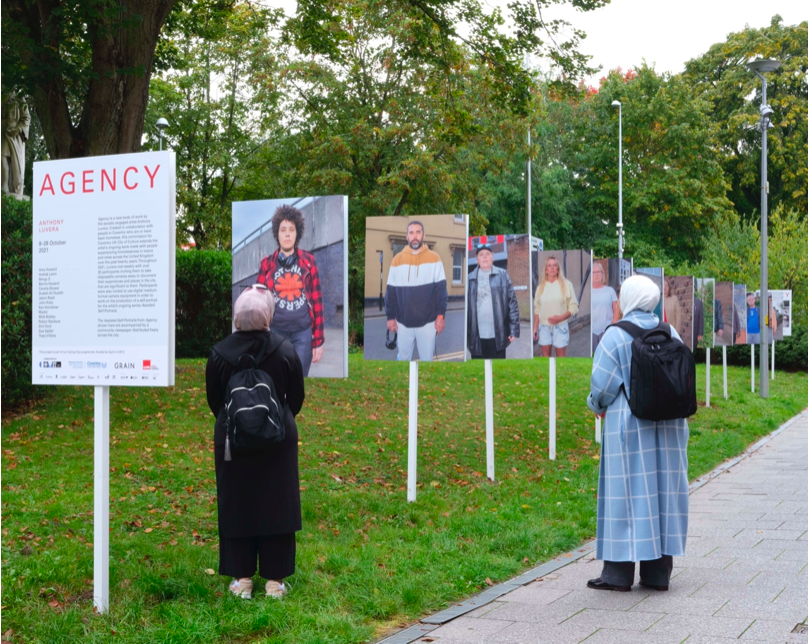
Agency
Anthony Luvera
Participants:
Amy Howard
Arshak Lanin
Bengy S
Bernie Howard
Cecelia Stower
Dualeh Ali Dualeh
Jason Read
John Kiely
Ken Hornblow
Martin
Mick Bickley
Sue Sadler
Tracy Villiers
Agency is a practice research project created by Anthony Luvera in collaboration with people who have experienced homelessness in Coventry, commissioned by Coventry UK City of Culture. Through weekly group workshops and individual meetings, Luvera met with over 30 participants inviting them to take disposable cameras away to document their experiences and places in the city that are significant to them. Participants were also invited to work with Luvera to use digital medium format camera equipment in order to work on the production of a self-portrait for the artist’s ongoing series, Assisted Self-Portraits. Agency was first shown as part of the Home: Arts and Homelessness Festival held in October 2021, in an exhibition staged in the public realm on Warwick Row, Coventry, and published in community newspaper distributed freely across the city. Agency has since been featured in numerous publications, journals, and reports, including the first ever report published by Amnesty International UK about homelessness in England, and in exhibitions held in Landksrona, Sweden and in Oslo, Norway. Luvera continues to work with participants to support their independent activities as the Agency Photography Group. The first Agency Photography Group exhibition, titled Constellations of HOME was held in the FAB Gallery at Warwick University in October 2022.
Installation of Agency by Anthony Luvera, Warwick Row, Coventry, Coventry UK City of Culture 2021, 8 – 28 October 2021
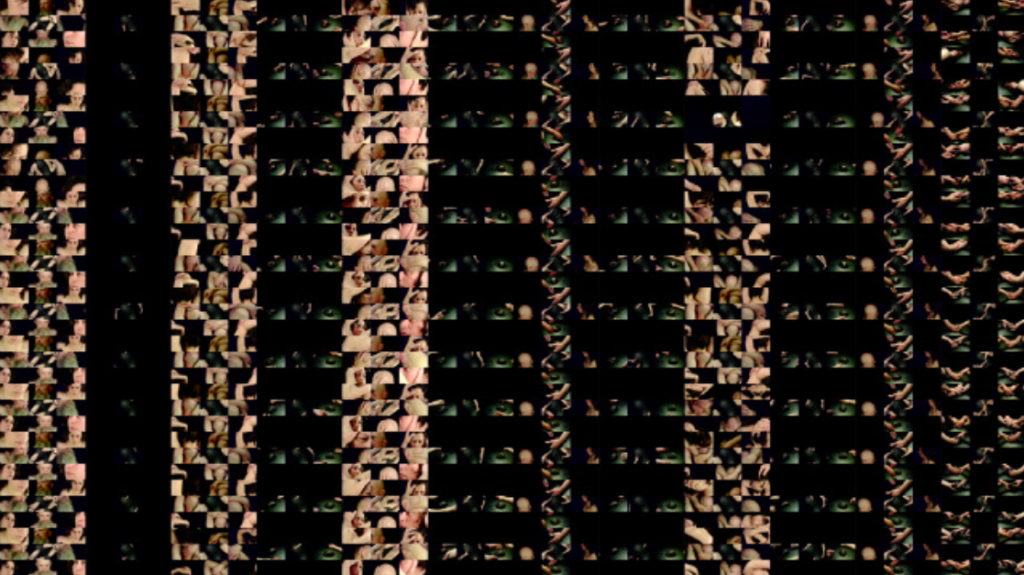
III: Once Returned / On being together in time
2022 – 2023
Teoma Naccarato & John MacCallum
The rhythm of our daily lives and relationships is inextricably entangled with ongoing scientific, artistic, and philosophical reincarnations of the “clock”. Importantly, tools for planning and tracking time are not only descriptive but prescriptive of human behaviors. Design choices such as the discretization of time into days, hours, minutes, and seconds provides a structure for managing and measuring behaviors over time — on the condition that the behavior being aligned to a clock may also be discretized, for example: one step, one gesture, one breath, one heartbeat.
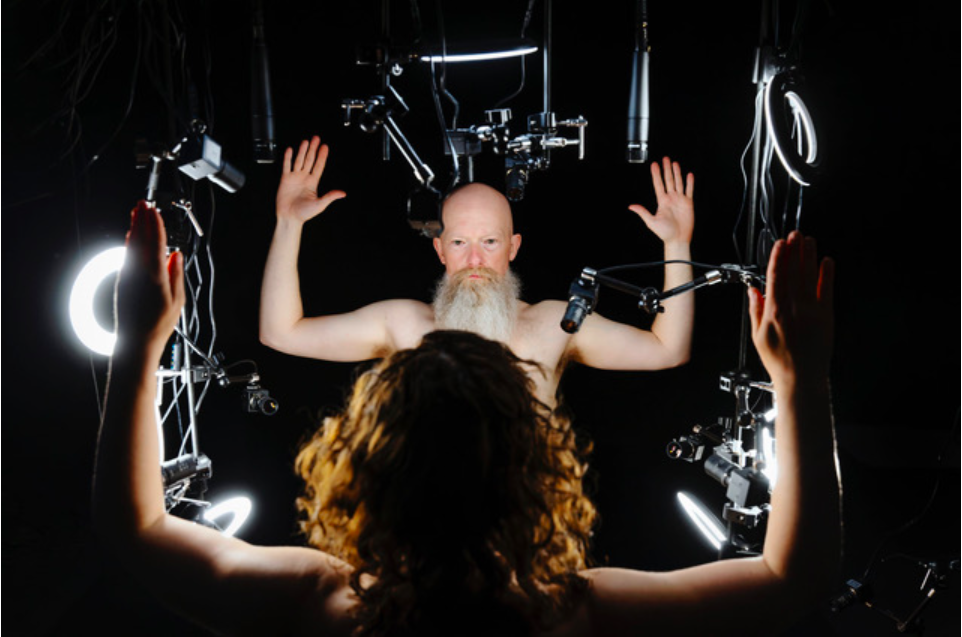
In my collaborative practice-as-research, I examine timekeeping systems as a form of choreography. In a recent project called “III: Once Returned”, created and performed with composer/computer scientist John MacCallum, we scored our every action, down to each inhale and exhale, over the course of a continuous, 72-hour livestream performance. As we endured for three full days and nights, each attempting to correlate our temporality with the pre-composed metronome, we were also accompanied by a pig heart that decomposed slowly between us at its own pace. Throughout, we wore electrocardiograms (ECGs), from which heart rate data was used to inform the temporality of the music for the audience.
The multiple, irreconcilable temporal processes unfolding over the course of this extended-duration performance were tethered by our shared context and intention. Sustaining temporal alignments between the various performers – us, the heart, the metronome, the music, the streaming platform, the video software, etc. – required a continual negotiation of the boundaries of what is means to be together in time.
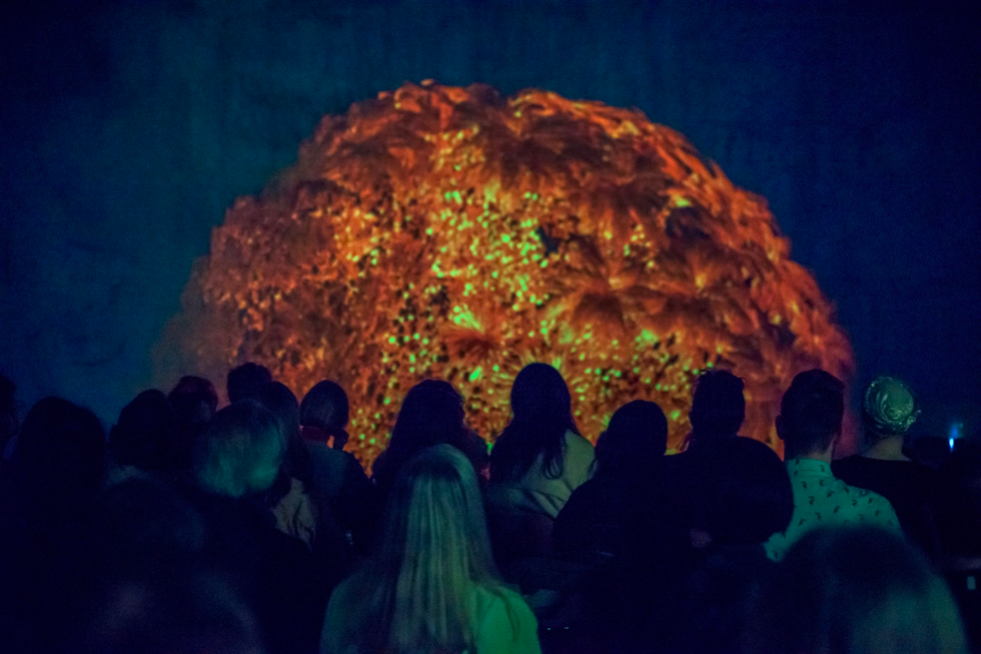
Institution as Praxis – New Curatorial Directions for Collaborative Research
Carolina Rito
2017-
Institution as Praxis is a curatorial research project that uses curatorial programming (talks, workshops, performances, screenings, exhibitions) as a methodology to activate the research questions. From 2017 to 2020, this curatorial research project explored the critical and investigative capabilities of public programming in contemporary art institutions and in contemporary curating. In other words, how are institutions of display generating new knowledge about the world in which we live? Through more than hundred initiatives such as series of public events, publications, and exhibitions this project created a new model for research-led curating for the cultural sector.
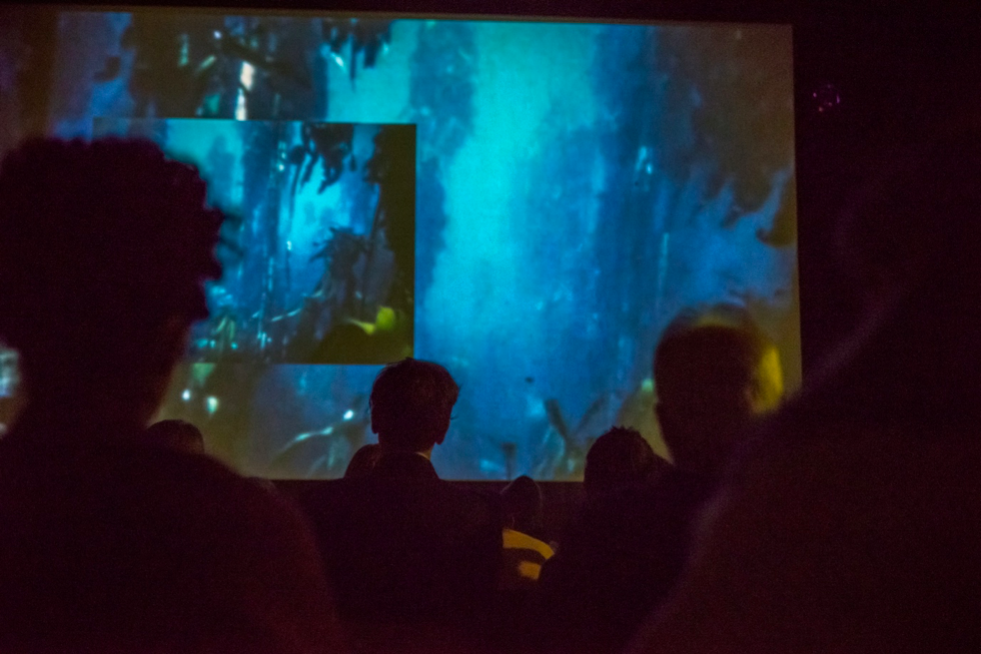
The research questions were:
What are the research capacities of curatorial public programming in contemporary art institutions and in contemporary curating?
How can a research-led curatorial programme in a contemporary art centre be developed?
How can the cultural sector’s curatorial practices inform and contribute to the debates in academic curatorial research?
To the present, this multi-component project has delivered: 1) a three-year series of curated public events; 2) the publication of an edited book, Institution as Praxis – New Curatorial Directions for Collaborative Research; 3) the publication of one book chapter in the edited book Institution as Praxis – New Curatorial Directions for Collaborative Research; 4) and the publication of “Advisory Document on Collaborative Research” for the AHRC Midlands4Cities Consortium and Arts Council England.

Institution as Praxis was developed in partnership with Nottingham Contemporary (contemporary art centre in Nottingham, UK) and two Higher Education institutions, Nottingham Trent University and University of Nottingham. The partnership between the cultural and HE sectors at Nottingham Contemporary offered the curatorial conditions for an experimental curatorial approach located at the intersections between two paradigms of knowledge production: the academic and the curatorial/artistic.
Partners
Nottingham Contemporary
University of Nottingham
Nottingham Trent University
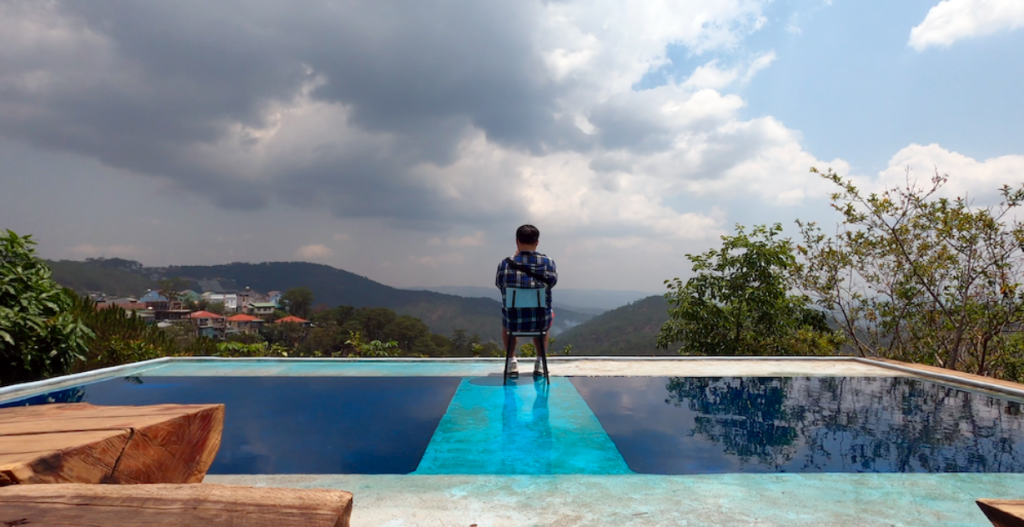
Nine Earths
2021-2023
Kevin Walker with D-Fuse
Nine Earths, produced by artist collective D-Fuse, explores climate change and consumption through the daily lives of average people (primarily aged 16-34) in various countries around the world. The title refers to countries using up to nine Earth’s worth of resources each year. We commission artists and filmmakers in each country to film a day in the life of one person, then compile the footage into films and immersive installations. Associate Professor Kevin Walker of Coventry’s Centre for Postdigital Cultures engages in visual ethnography using the film footage, to address the following questions:
- What can video collected by artists and young people in different countries tell us about global consumption?
- How feasible and suitable is remote ethnography for illuminating specific local contexts and making cross-cultural comparisons about consumption practices in relation to climate change?
These questions are addressed by analysing the footage against themes developed with climate scientists, through the ethnographic practice of ‘thick description’, not seeking to produce an authoritative, objective account but embracing what Marisol de la Cadena calls ‘not knowing’ (2021). The footage is then edited into films like the one shown here – more art film than documentary.
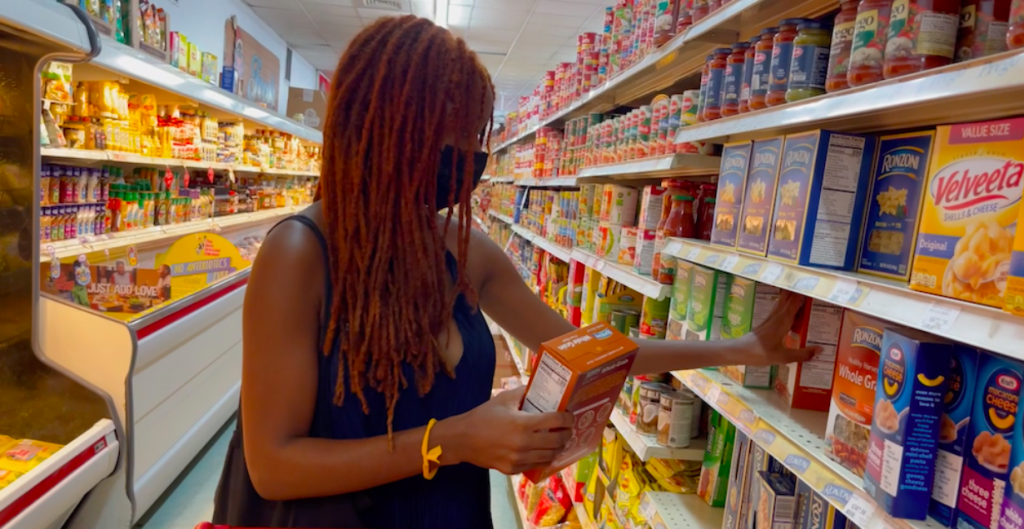
Nine Earths exposes power relations between the participants and the local infrastructures and global industries that constrain and shape their actions. We found participants to be keenly aware of these connections between the local and global. Cultures can no longer be studied in isolation. The act of editing footage into stories is unavoidably subjective, and there is a degree of stage direction in much of the footage. But we found that we cannot make judgements about individual people or places.
Event photos
